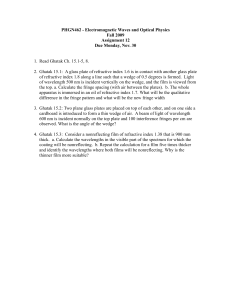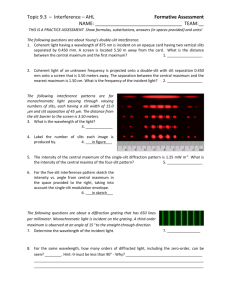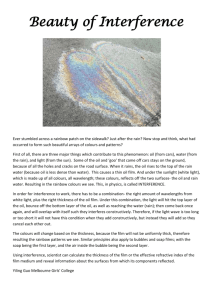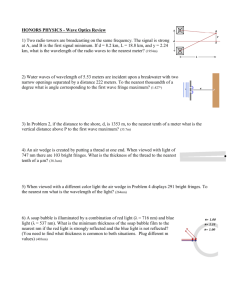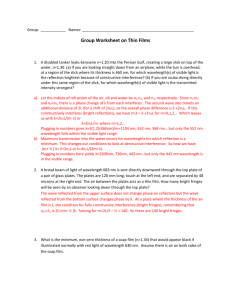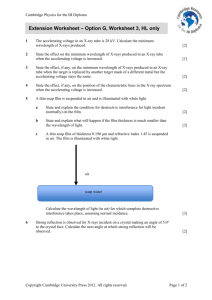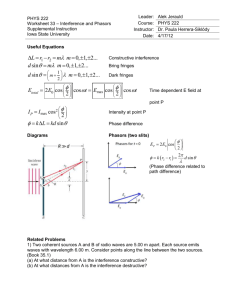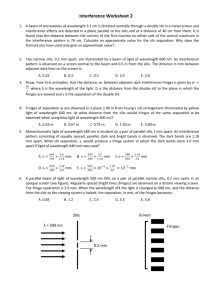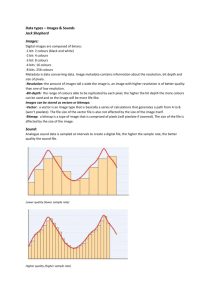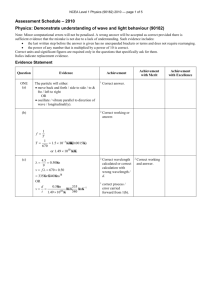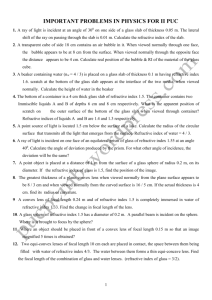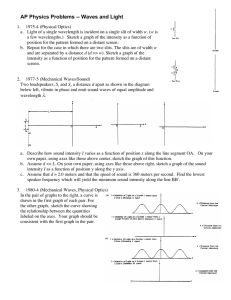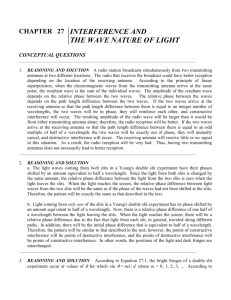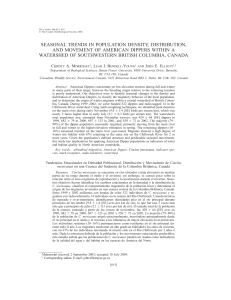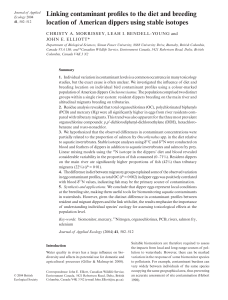Interference 2
advertisement
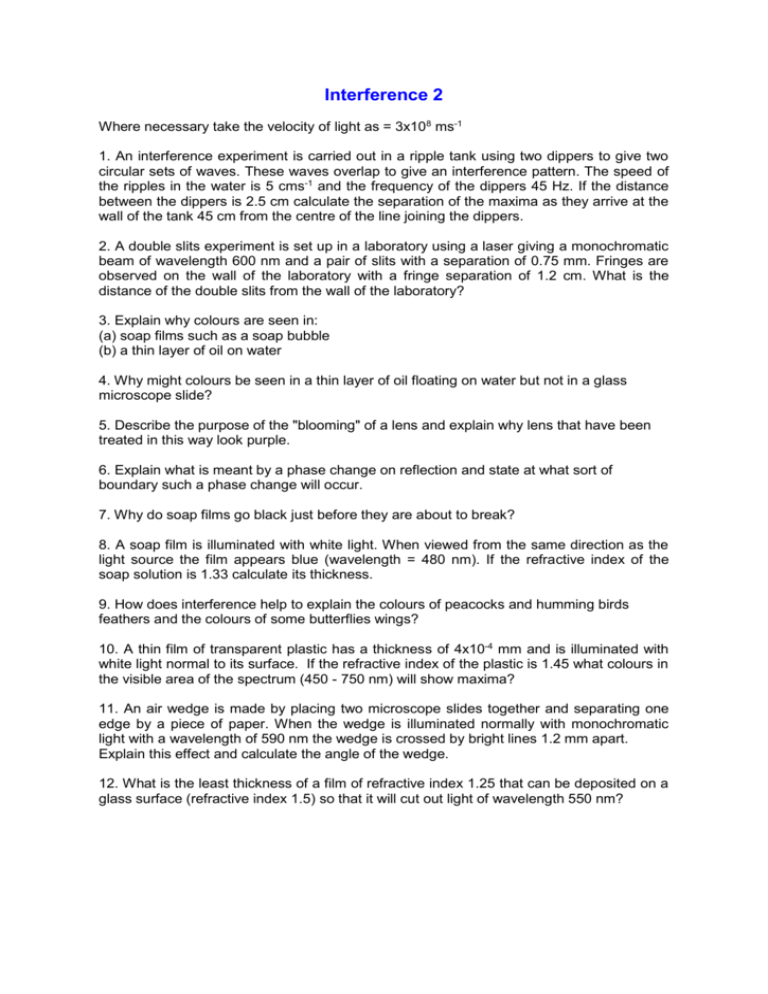
Interference 2 Where necessary take the velocity of light as = 3x108 ms-1 1. An interference experiment is carried out in a ripple tank using two dippers to give two circular sets of waves. These waves overlap to give an interference pattern. The speed of the ripples in the water is 5 cms-1 and the frequency of the dippers 45 Hz. If the distance between the dippers is 2.5 cm calculate the separation of the maxima as they arrive at the wall of the tank 45 cm from the centre of the line joining the dippers. 2. A double slits experiment is set up in a laboratory using a laser giving a monochromatic beam of wavelength 600 nm and a pair of slits with a separation of 0.75 mm. Fringes are observed on the wall of the laboratory with a fringe separation of 1.2 cm. What is the distance of the double slits from the wall of the laboratory? 3. Explain why colours are seen in: (a) soap films such as a soap bubble (b) a thin layer of oil on water 4. Why might colours be seen in a thin layer of oil floating on water but not in a glass microscope slide? 5. Describe the purpose of the "blooming" of a lens and explain why lens that have been treated in this way look purple. 6. Explain what is meant by a phase change on reflection and state at what sort of boundary such a phase change will occur. 7. Why do soap films go black just before they are about to break? 8. A soap film is illuminated with white light. When viewed from the same direction as the light source the film appears blue (wavelength = 480 nm). If the refractive index of the soap solution is 1.33 calculate its thickness. 9. How does interference help to explain the colours of peacocks and humming birds feathers and the colours of some butterflies wings? 10. A thin film of transparent plastic has a thickness of 4x10-4 mm and is illuminated with white light normal to its surface. If the refractive index of the plastic is 1.45 what colours in the visible area of the spectrum (450 - 750 nm) will show maxima? 11. An air wedge is made by placing two microscope slides together and separating one edge by a piece of paper. When the wedge is illuminated normally with monochromatic light with a wavelength of 590 nm the wedge is crossed by bright lines 1.2 mm apart. Explain this effect and calculate the angle of the wedge. 12. What is the least thickness of a film of refractive index 1.25 that can be deposited on a glass surface (refractive index 1.5) so that it will cut out light of wavelength 550 nm?
